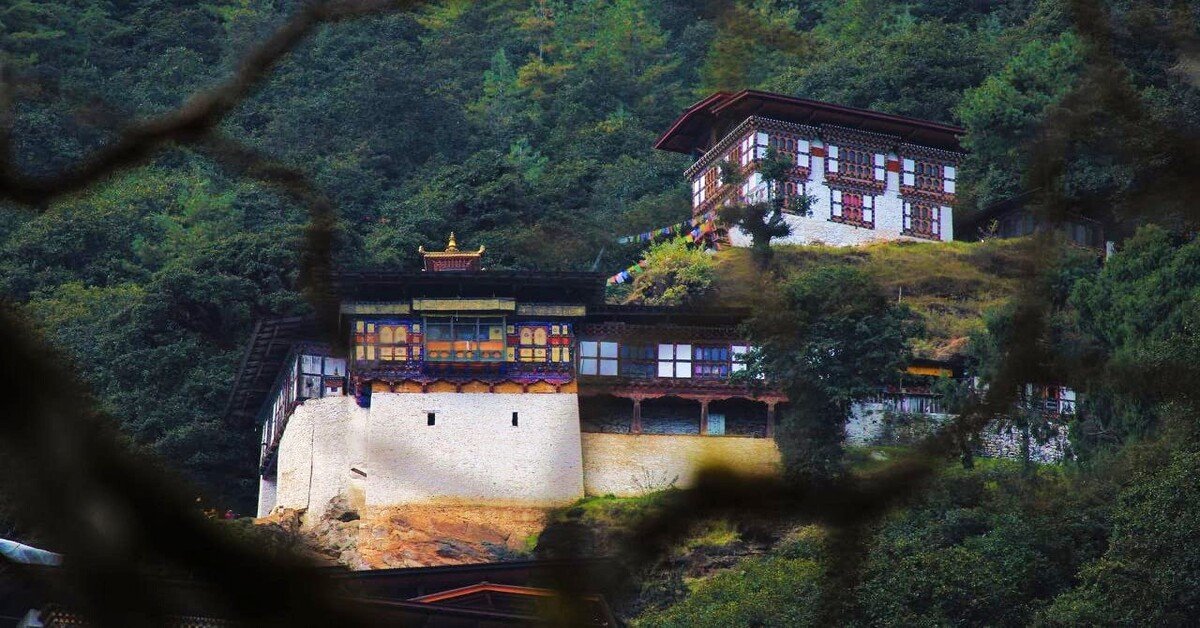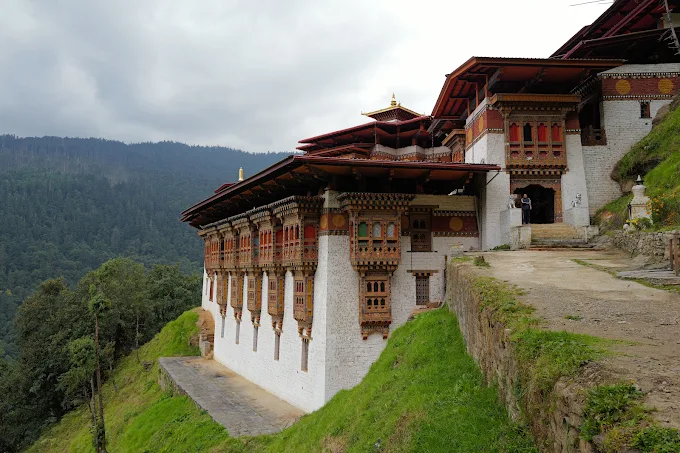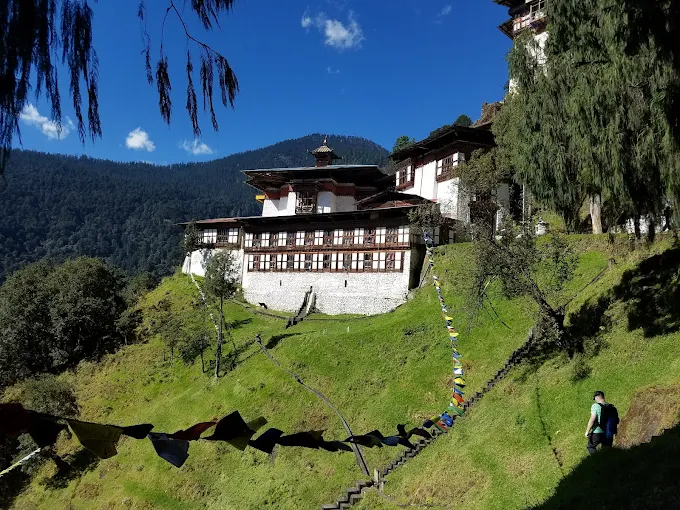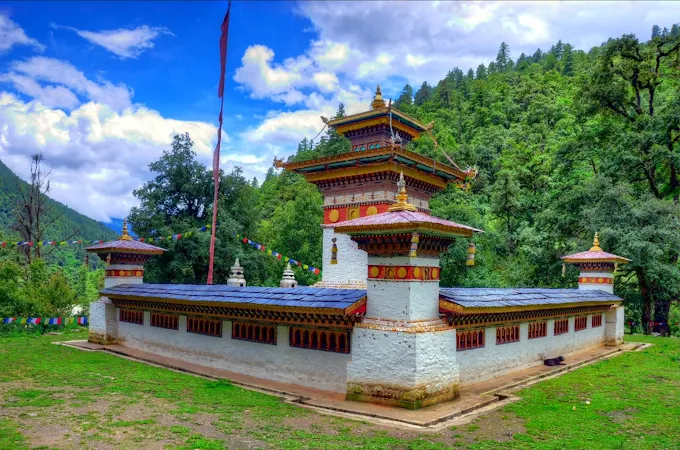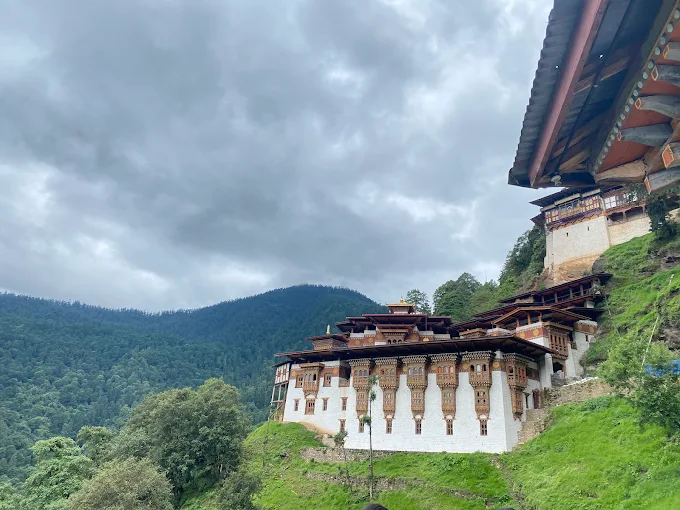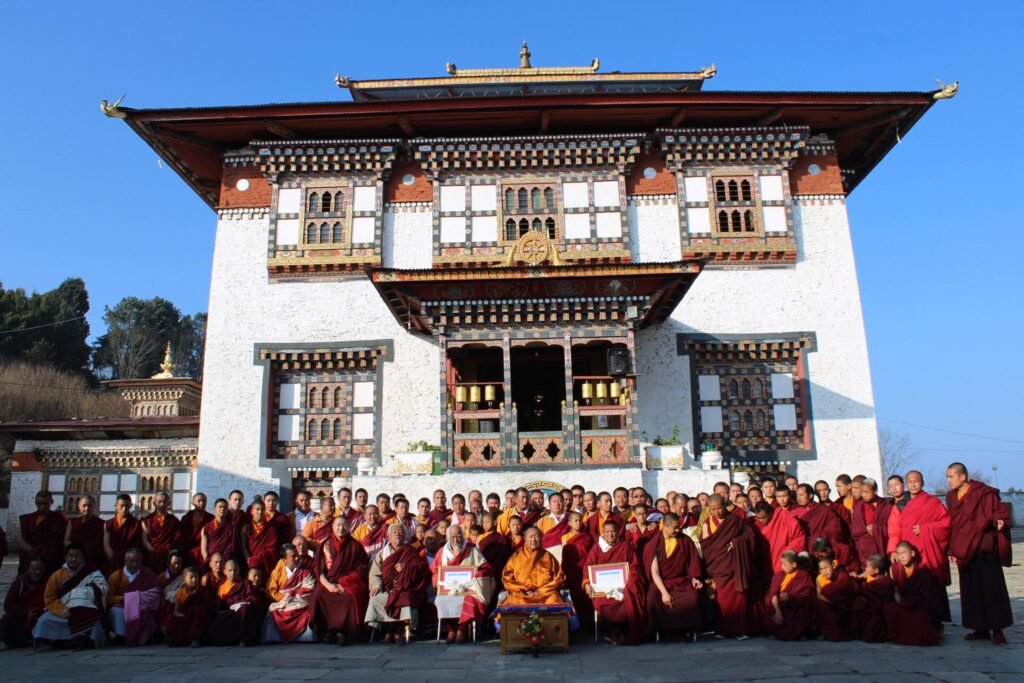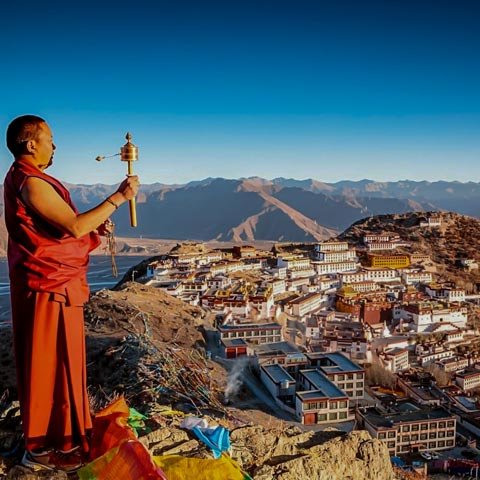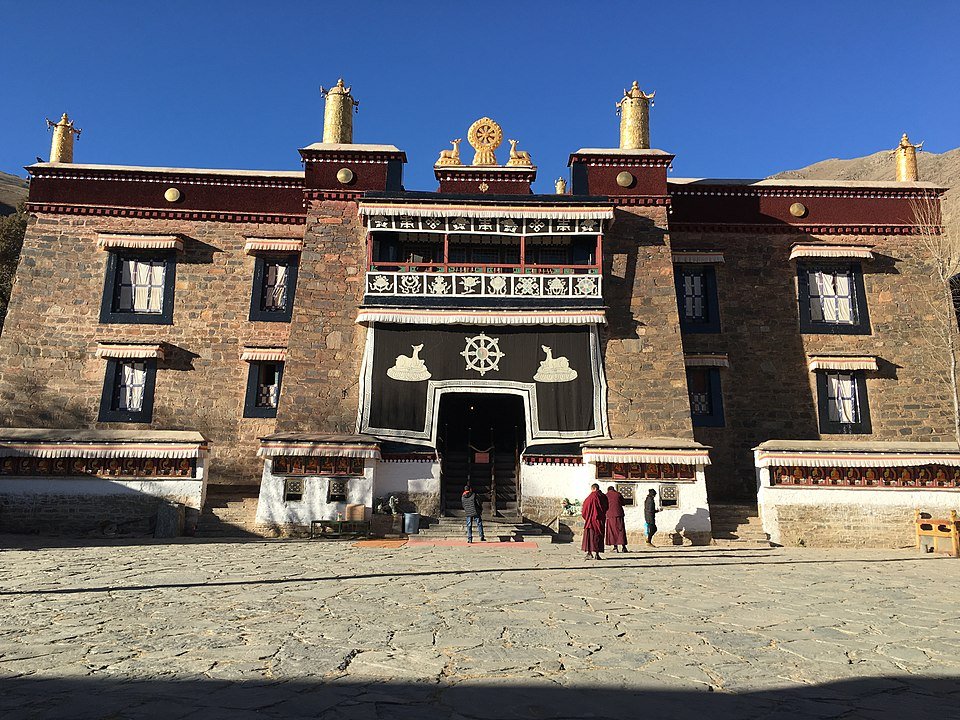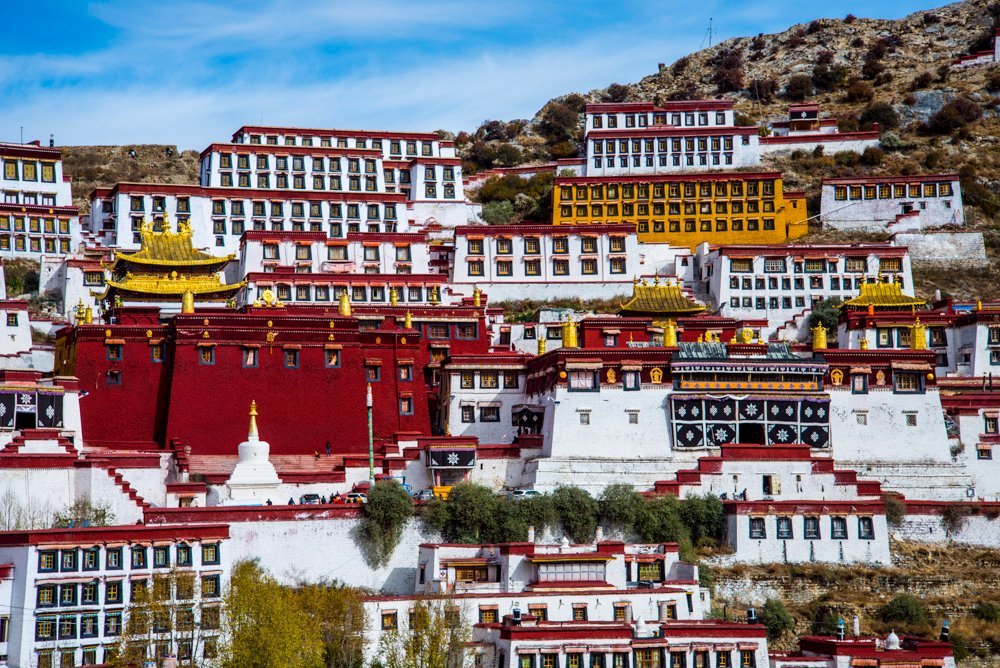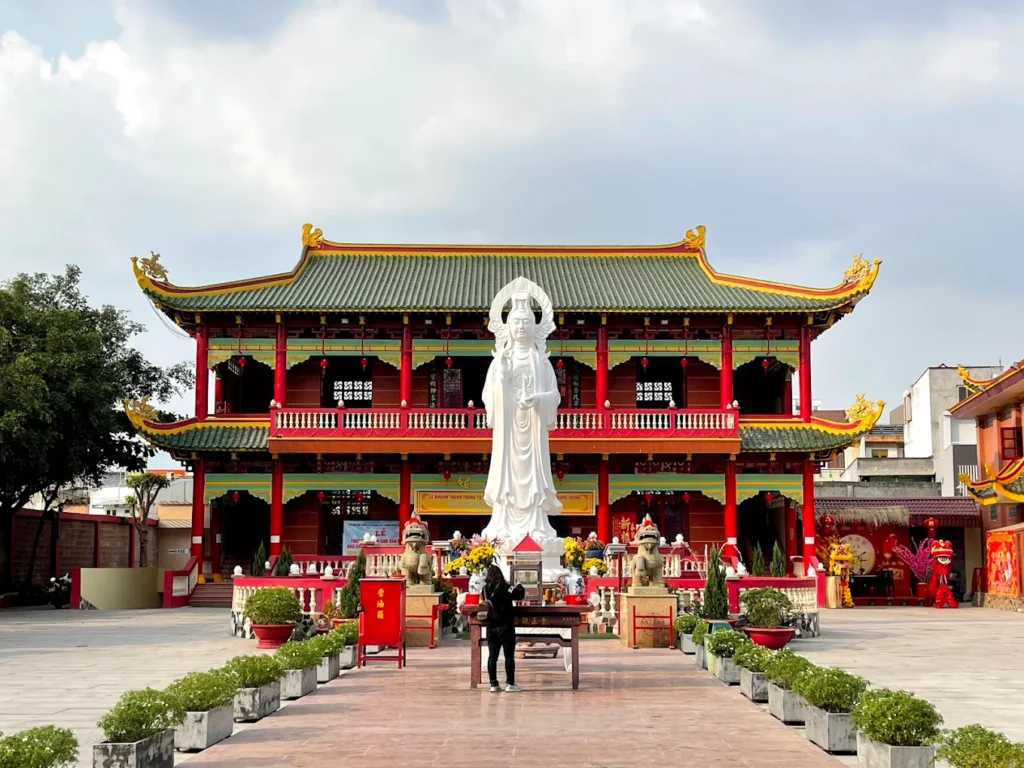Cheri Goemba: The Sacred Retreat of Thimphu’s Drukpa Kagyu Heritage
Nestled at the end of Thimphu’s verdant valley, where the Wangchhu River carves through a carpet of pine and cedar, Cheri Goemba rises from a forested slope at 2,600 meters, its white walls bathed in the soft glow of dawn. In the main lhakhang, monks chant the Dorje Sempa mantra, their voices resonating around a bronze statue of Zhabdrung Ngawang Namgyal, founder of Bhutan’s unified state. Established in 1620 by Zhabdrung himself, this Drukpa Kagyu retreat cradles the sacred spot where he meditated for three years, its stone stupas and prayer flags fluttering in the Himalayan breeze. The air carries the scent of juniper incense, each stick lit to honor Guru Rinpoche’s legacy. From its secluded perch, Thimphu Dzongkhag stretches below, tying the monastery to Bhutan’s spiritual roots. This sacred haven beckons travelers, seekers, and scholars to climb its trails and immerse themselves in the silence of Drukpa Kagyu devotion.
Whispers of Unity: Overview and Significance
Introduction to Cheri Goemba
Cheri Goemba, tucked into the northern end of Thimphu Dzongkhag, Bhutan, is a revered Drukpa Kagyu retreat, celebrated for its role as Zhabdrung Ngawang Namgyal’s meditation sanctuary and its serene valley setting. A 45-minute hike from the trailhead near Dodena unveils a tranquil escape where the rustle of pines and river murmurs create a haven of peace. Named “Cheri” for its auspicious location, it embodies Bhutan’s spiritual heritage, fostering contemplation and preserving the legacy of Bhutan’s unification. A cultural and sacred gem, the monastery weaves history, meditation, and Himalayan reverence into a timeless refuge.
Historical Journey
Cheri Goemba was founded in 1620 by Zhabdrung Ngawang Namgyal, the Tibetan lama who unified Bhutan, choosing its forested slope for a three-year meditation retreat. By the 17th century, it grew into a significant Drukpa Kagyu center under his guidance, with the main lhakhang and stupas constructed to honor his legacy. Expanded in the 18th century, it became a retreat for monks and lamas, its stone walls enduring through Bhutan’s turbulent history. Recent community-led restorations have revitalized its role, maintaining its sanctity as a pilgrimage and meditation site.
Cultural Significance
- Drukpa Kagyu Devotion: Rooted in the Drukpa Kagyu lineage, the monastery centers on Zhabdrung and Guru Rinpoche, emphasizing meditation and state unity.
- Bhutanese Heritage: A spiritual anchor for the Bhutanese, it preserves rituals like mantra recitation and tsechu ceremonies, reflecting national identity.
- Unification Legacy: Zhabdrung’s meditation here shaped Bhutan’s political and spiritual foundation.
- Regional Influence: Pilgrimages draw devotees from Thimphu and beyond, fostering spiritual bonds.
Unique Legacy
- Zhabdrung’s Retreat: The site of his three-year meditation holds sacred potency.
- Secluded Serenity: Its forested perch enhances meditative focus, distinct among Thimphu’s monasteries.
- Stupa Cluster: Stone chortens commemorate Zhabdrung’s legacy, a rare architectural feature.
- Cultural Symbol: Its resilience reflects Bhutan’s spiritual endurance.
Community and Global Impact
- Local Devotion: The monastery hosts retreats and festivals, strengthening Bhutanese Buddhist ties.
- Pilgrimage Hub: Hundreds visit annually, drawn by Zhabdrung’s legacy and serene trails.
- Global Appeal: International meditators and historians seek its unification history.
- Cultural Dialogue: Shared rituals unite Bhutanese and global visitors, fostering understanding.
Modern Relevance
- Spiritual Retreat: Cheri offers solitude for mindfulness in a connected world.
- Cultural Preservation: It safeguards Drukpa Kagyu practices, ensuring Bhutan’s heritage thrives.
- Historical Reflection: Its legacy inspires Bhutan’s national identity.
Historical Anecdotes
- Zhabdrung’s Meditation: His 1620 retreat sanctified the site, shaping Bhutan’s destiny.
- Stupa Construction: Chortens were built to honor his passing, marking its growth.
- Restoration Tales: Community efforts revived its lhakhangs, preserving history.
Social Role
- Community Hub: Festivals and retreats unite Thimphu’s Buddhists.
- Educational Center: Monks train in meditation, nurturing spiritual growth.
- Charitable Spirit: Communal feasts reflect Drukpa Kagyu’s compassion.
Artistic Influence
- Thangka Art: Murals of Zhabdrung inspire Bhutanese artists.
- Cultural Icon: The monastery’s valley view graces local imagery.
- Festival Art: Cham dance costumes showcase Bhutanese craftsmanship.
Cheri Goemba’s forested slopes, where Zhabdrung Ngawang Namgyal once meditated, weave a narrative of devotion and unity that defines Bhutan’s Drukpa Kagyu legacy. From its founding in 1620 to its modern role as a retreat and pilgrimage site, the monastery’s history pulses with the spirit of Bhutan’s unification, uniting monks and pilgrims in pursuit of enlightenment. Its sacred chortens and serene trails set the stage for an architectural tapestry that mirrors its Himalayan soul. As we delve into its physical and spiritual features, Cheri’s design reveals how its austere beauty nurtures profound contemplation and historical reverence.
Crafted by the Valley: Architectural and Spiritual Features
Iconic Design
Cheri Goemba’s architecture blends Bhutanese Drukpa Kagyu simplicity with its forested valley setting, creating a sanctuary that harmonizes with Thimphu’s rugged landscape. Whitewashed stone walls and wooden roofs, adorned with prayer flags, rise from the 2,600-meter slope, reflecting Buddhist humility. The compact layout, centered on the main lhakhang, prioritizes meditative and commemorative function, with chorten clusters enhancing spiritual focus. Its perch above the Wangchhu River, overlooking Thimphu Dzongkhag, amplifies its serene resonance, tying the monastery to Bhutan’s Himalayan ethos.
Key Structures
- Main Lhakhang: The spiritual core, housing Zhabdrung’s statue, built to honor his retreat.
- Zhabdrung Chorten: A stone stupa commemorating his passing, a pilgrimage focal point.
- Meditation Caves: Ancient retreats used by Zhabdrung and later hermits.
- Monastic Quarters: Stone dormitories for monks, restored in recent years.
- Prayer Wheel House: A small structure with mani wheels, spun by devotees.
- Chorten Cluster: Multiple stupas near the lhakhang, honoring past lamas.
- Guest Pavilion: A modest space for pilgrims, blending with the forest.
Worshipped Statues
- Zhabdrung Ngawang Namgyal: A bronze statue in the lhakhang, depicting meditation, embodies Bhutan’s unification.
- Guru Rinpoche (Padmasambhava): A gilt statue, symbolizing spiritual guidance, radiates wisdom.
- Chenrezig (Avalokitesvara): A white stone statue, representing compassion, flanks the altar.
- Spiritual Role: Monks offer butter lamps to Zhabdrung and Guru Rinpoche, seeking unity and enlightenment.
Materials and Techniques
- Construction: Local stone and timber, joined with Bhutanese techniques, withstand valley weather.
- Artistry: Thangka murals and stone carvings, crafted by Thimphu artisans, reflect Drukpa Kagyu symbolism.
- Cultural Essence: The design prioritizes meditative austerity, distinct from dzong complexity.
Signature Elements
- Zhabdrung Chorten: The stupa honors his legacy, a spiritual beacon.
- Meditation Caves: Ancient retreats amplify the monastery’s sanctity.
- Prayer Flags: Fluttering flags carry prayers across the valley.
Lesser-Known Features
- Ancient Murals: Faded thangkas depict Zhabdrung’s life in the lhakhang.
- Hidden Relic: A stone relic in a cave, linked to Guru Rinpoche.
- Old Prayer Wheel: A weathered mani wheel, spun since the 17th century.
Preservation Efforts
- Restoration (2000s): Community efforts rebuilt lhakhangs and chortens.
- Challenges: Monsoon erosion affects stonework, requiring care.
- Modern Additions: Solar lights enhance evening accessibility.
Environmental Integration
- Forest Harmony: The monastery’s design respects Thimphu’s pine ecosystem.
- Eco-Practices: Monks maintain trails and protect the Wangchhu watershed.
- Wildlife Haven: Deer and birds thrive nearby, enhancing serenity.
Artisan Narratives
- Mural Painters: Thimphu artists restored thangkas, preserving sacred art.
- Stone Masons: Local craftsmen rebuilt chortens, blending tradition.
- Flag Weavers: Nuns crafted prayer flags, embedding blessings.
Symbolic Details
- Chortens: Represent the Buddha’s mind, guiding pilgrims.
- Prayer Flags: Five colors balance elements, spreading dharma.
- Thangkas: Depict enlightenment’s path, inspiring meditation.
Landscape Integration
- Valley Perch: Enhances meditative and commemorative focus.
- Wangchhu Views: The river’s flow mirrors inner calm.
- Pine Forests: Provide solitude and spiritual resonance.
Cheri’s stone lhakhangs and sacred chortens, nestled in Thimphu’s forested valley, are more than architectural marvels; they are sanctuaries for the Drukpa Kagyu practices that define its unifying soul. The statues of Zhabdrung and Guru Rinpoche, illuminated by butter lamps, anchor rituals that connect monks to Bhutan’s spiritual lineage. These sacred spaces, alive with chants and solitude, invite visitors to engage with the monastery’s living traditions. As we explore its rituals, Cheri’s role as a meditative and historical retreat comes to life, guiding devotees toward unity and enlightenment.
Rites of the Retreat: Rituals and Practices
Daily Sacred Rites
- Morning Chanting: Monks recite the Dorje Sempa mantra at dawn, fostering purification.
- Meditation Sessions: Silent meditation, held twice daily, centers on Mahamudra practices.
- Butter Lamp Offerings: Devotees light lamps before Zhabdrung, praying for unity.
Unique Practices
- Zhabdrung Meditation: Monks replicate his three-year retreat in caves, a Drukpa Kagyu tradition.
- Chorten Circumambulation: Devotees circle stupas, honoring Zhabdrung’s legacy.
- Signature Ritual: Offering juniper incense at the cave, tied to the monastery’s founding.
Festival Traditions
- Cheri Tshechu (15th day, 5th lunar month): Cham dances and Zhabdrung offerings draw pilgrims.
- Lhabab Duchen: Ceremonies honor the Buddha’s descent, with chorten circuits.
- Losar (Bhutanese New Year): Monks perform purification rites, blessing visitors.
- Statue Veneration: Zhabdrung’s statue is adorned with silk during festivals.
Visitor Engagement
- Accessible Rituals: Visitors can join chants or circumambulate chortens, guided by monks.
- Offerings: Butter lamps and prayer flags, available at the monastery, invite participation.
- Drukpa Etiquette: Bow before statues and maintain silence during meditation.
Spiritual Community Roles
- Monastics: Over 40 monks lead rituals and train in meditation.
- Hermits: Reclusive lamas meditate in caves, guiding advanced practitioners.
- Lay Devotees: Thimphu villagers maintain trails and offer supplies.
Interfaith Connections
- Syncretic Practices: Some blend Buddhist rites with Bon offerings, honoring local spirits.
- Outreach: Festivals welcome diverse faiths, fostering unity.
- Education: Monks share Drukpa Kagyu teachings with visitors.
Ritual Symbolism
- Butter Lamps: Represent wisdom dispelling ignorance.
- Chorten Circuits: Symbolize devotion’s endless path.
- Cham Dances: Enact spiritual victory over obstacles.
Seasonal Variations
- Summer Rites: Vibrant with wildflowers, ideal for Cheri Tshechu.
- Winter Retreats: Cold enhances cave meditation focus.
- Monsoon Chants: Rain amplifies mantra resonance.
Monastic Life
- Daily Routine: Monks rise at 4:00 AM for chants, meditation, and study.
- Community Service: Monks guide pilgrims and maintain lhakhangs.
- Training Hub: Monks learn Drukpa Kagyu practices for spiritual depth.
Cheri’s rituals, from the Dorje Sempa mantra to Zhabdrung’s commemorative offerings, breathe life into its valley sanctuary, connecting devotees to the Drukpa Kagyu lineage. The monastery’s meditative practices, rooted in Bhutan’s unifying faith, invite visitors to engage with its spiritual heart, whether through chants or silent reflection. For travelers, these rites offer a glimpse into Thimphu’s sacred traditions, accessible via the forested trails. As we turn to visitor information, Cheri’s secluded setting guides practical planning, ensuring a meaningful ascent to this sacred retreat.
Journey to Solitude: Visitor Information
Navigating to Cheri Goemba
- Location: Northern Thimphu Dzongkhag, 2,600 meters, 45-minute hike from the trailhead near Dodena, 15 km from Thimphu center.
- Landmarks: Near Wangchhu River and Dodena village, with trailhead signs in Dzongkha and English.
- Routes: Drive to Dodena, then hike the Cheri-Tango Trail, a shaded path.
Address of Cheri Goemba
- Dzongkha: Cheri Goenpa, Thimphu Dzongkhag, Bhutan.
- English: Cheri Goemba, Thimphu District, Bhutan.
Visiting Hours and Etiquette
- Hours: Open daily, 6:00 AM–5:00 PM, with monks available for guidance.
- Etiquette: Dress modestly, remove shoes before lhakhangs, and avoid disturbing meditation.
- Drukpa Custom: Offer butter lamps with both hands and bow to statues.
Transport Options
- By Foot: Hike from Dodena (45 minutes, easy to moderate difficulty).
- By Taxi: Drive to Dodena trailhead, then trek upward.
- By Horse: Local guides offer pack animals, arranged at Dodena.
Accessibility and Safety
- Mobility: Moderate trails may challenge those with mobility issues; no ramps available.
- Safety: Stable paths with guideposts; carry layers for cool weather.
- Tips: Wear sturdy hiking shoes and bring water for the ascent.
Amenities and Surroundings
- Facilities: Basic dormitories for pilgrims; no restrooms or shops on-site.
- Nearby: Tango Monastery and Tashichho Dzong, within 15 km of trailhead, offer cultural experiences.
- Dining: Vegetarian meals at Thimphu’s eateries, like Folk Heritage Museum, before trekking.
Immersive Visitor Tips
- Best Timing: Early morning hikes offer clear views and monk chants.
- Sensory Moments: Inhale pine-scented air and hear mantra recitations.
- Statue Connection: Offer butter lamps to Zhabdrung and reflect briefly.
- Festival Planning: Attend Cheri Tshechu for cham dances.
Nearby Cultural Experiences
- Tango Monastery: A sister retreat, 1 km from trailhead, with Guru Rinpoche’s cave.
- Tashichho Dzong: Thimphu’s iconic fortress, 15 km away.
- National Memorial Chorten: A sacred stupa, 14 km from trailhead.
Photography Tips
- Best Angles: Capture the chorten cluster at sunrise for golden light.
- Respectful Shots: Avoid photographing monks during meditation without permission.
- Scenic Views: The Wangchhu Valley offers stunning shots.
- Equipment: A lightweight camera suits the trek.
The ascent to Cheri Goemba, guided by Thimphu’s forested trails, is a pilgrimage that blends physical effort with spiritual discovery, inviting visitors to engage with its Drukpa Kagyu traditions. The monastery’s lhakhangs and chortens, vibrant with chants and solitude, offer a window into Bhutan’s sacred heart, where unity feels tangible. Beyond its physical seclusion, Cheri’s deeper cultural and spiritual significance enriches the journey, revealing the essence of Himalayan Buddhism. As we explore these insights, the monastery’s role as a beacon of devotion and history comes into sharper focus, deepening our connection to its sacred legacy.
Cultural and Spiritual Insights
Drukpa Kagyu Philosophy
Cheri Goemba embodies Drukpa Kagyu’s core: compassion and wisdom through meditation. Zhabdrung and Guru Rinpoche inspire devotees to transcend ego, reflected in retreats and chants. Mahamudra teachings emphasize direct realization, guiding monks toward enlightenment.
Environmental Spirituality
The monastery’s valley perch ties it to Himalayan reverence for nature. The Wangchhu’s flow and pine forests foster meditative calm, with offerings honoring local deities. The landscape invites reflection on harmony with the natural world.
Artistic Symbolism
Thangka murals depict Zhabdrung’s unification, symbolizing spiritual triumph. Chortens represent the Buddha’s mind, while prayer flags balance elements. These elements weave Drukpa Kagyu ideals into the monastery’s aesthetic.
Community Resilience
Founded by Zhabdrung’s devotees, Cheri reflects Bhutanese perseverance through harsh winters. Its restoration showcases collective faith, sustained by volunteer-led efforts, uniting Thimphu’s Buddhists.
Environmental Stewardship
The monastery’s pristine slopes foster Buddhist environmental ethics. Monks protect trails and the Wangchhu watershed, ensuring balance. Visitors are urged to honor the Himalayas’ sanctity.
Meditative Practices
Drukpa Kagyu meditation, including Mahamudra, cultivates awareness. Zhabdrung’s cave offers spaces for retreats, guided by lamas, amplifying inner peace amidst Thimphu’s valley.
Cultural Narratives
- Zhabdrung’s Legacy: Tales of his 1620 retreat fuel devotion.
- Monastic Stories: Monks share cave meditation experiences.
- Festival Lore: Cheri Tshechu dances carry ancient traditions.
Historical Context
- Unification Era: Zhabdrung’s work shaped Bhutan’s Buddhist identity.
- Patronage Growth: 17th-century support strengthened Cheri’s role.
- Modern Revival: Restorations reflect Bhutan’s cultural continuity.
Reflecting on the Journey
Cheri Goemba, cradled in Thimphu’s sacred valley, is a sanctuary where unity meets wisdom. Its lhakhangs and chortens, alive with Zhabdrung’s legacy, embody Bhutan’s Drukpa Kagyu soul, inviting all to seek enlightenment. The monastery’s trails, worn by centuries of pilgrims, tell a story of resilience and devotion, rooted in Himalayan faith. Whether meditating before Guru Rinpoche, circling the chortens, or tracing Bhutan’s unifying heritage, visitors find a space to reflect and connect. As you descend, the Wangchhu’s murmur and prayer flags’ flutter linger, a reminder that peace is always within reach.
